
Abraham "Bram" Stoker was an Irish author who wrote the 1897 Gothic horror novel Dracula. During his life, he was better known as the personal assistant of actor Sir Henry Irving and business manager of the West End's Lyceum Theatre, which Irving owned.
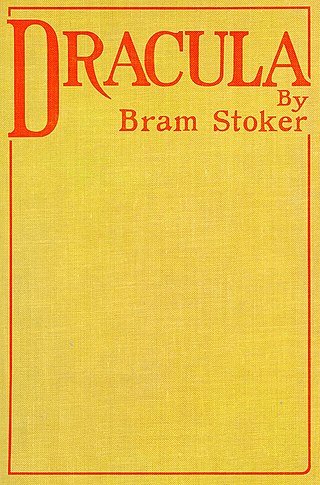
Dracula is a 1897 Gothic horror novel by Irish author Bram Stoker. An epistolary novel, the narrative is related through letters, diary entries, and newspaper articles. It has no single protagonist and opens with solicitor Jonathan Harker taking a business trip to stay at the castle of a Transylvanian nobleman, Count Dracula. Harker escapes the castle after discovering that Dracula is a vampire, and the Count moves to England and plagues the seaside town of Whitby. A small group, led by Abraham Van Helsing, investigate and hunt the vampire.

Vampire literature covers the spectrum of literary work concerned principally with the subject of vampires. The literary vampire first appeared in 18th-century poetry, before becoming one of the stock figures of gothic fiction with the publication of Polidori's The Vampyre (1819), inspired by a story told to him by Lord Byron. Later influential works include the penny dreadful Varney the Vampire (1847); Sheridan Le Fanu's tale of a lesbian vampire, Carmilla (1872), and the most well known: Bram Stoker's Dracula (1897). Some authors created a more "sympathetic vampire", with Varney being the first, and more recent examples such as Moto Hagio's series The Poe Clan (1972–1976) and Anne Rice's novel Interview with the Vampire (1976) proving influential.

Professor Abraham Van Helsing is a fictional character from the 1897 gothic horror novel Dracula written by Bram Stoker. Van Helsing is a Dutch polymath doctor with a wide range of interests and accomplishments, partly attested by the string of letters that follows his name: "MD, D.Ph., D.Litt., etc.", indicating a wealth of experience, education and expertise. He is a doctor, professor, lawyer, philosopher, scientist, and metaphysician. The character is best known through many adaptations of the story as a vampire slayer, monster hunter and the arch-nemesis of Count Dracula, and the prototypical and the archetypal parapsychologist in subsequent works of paranormal fiction. Some later works tell new stories about Van Helsing, while others, such as Dracula (2020) and I Woke Up a Vampire (2023) have characters that are his descendants.
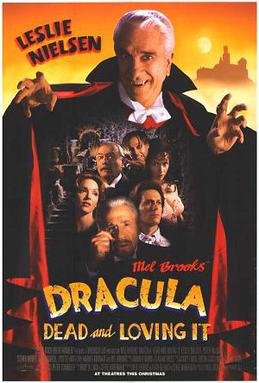
Dracula: Dead and Loving It is a 1995 comedy horror film directed by Mel Brooks and starring Leslie Nielsen. It is a spoof of Bram Stoker's novel Dracula and of some of the story's well-known adaptations. Brooks co-authored the screenplay with Steve Haberman and Rudy De Luca. He also appears as Dr. Van Helsing. The film's other stars include Steven Weber, Amy Yasbeck, Peter MacNicol, Harvey Korman, and Anne Bancroft.

Dracula is a 1958 British gothic horror film directed by Terence Fisher and written by Jimmy Sangster based on Bram Stoker's 1897 novel of the same name. The first in the series of Hammer Horror films starring Christopher Lee as Count Dracula, the film also features Peter Cushing as Doctor Van Helsing, along with Michael Gough, Melissa Stribling, Carol Marsh, and John Van Eyssen. In the United States, the film was retitled Horror of Dracula to avoid confusion with the U.S. original by Universal Pictures, 1931's Dracula.
Lucy Westenra is a fictional character in the 1897 novel Dracula by Bram Stoker. She is the 19-year-old daughter of a wealthy family and is Mina Murray's best friend. Early in the story, Lucy gets proposed to by three suitors, Arthur Holmwood, John Seward, and Quincey Morris, on the same day. Turning the latter two down due to already being in love with Arthur, she accepts his proposal. Before getting the chance to marry, Lucy becomes Count Dracula's first English victim, and despite Seward contacting Abraham Van Helsing for help, she transforms into a vampire. Following her return as a vampire and attacks on children—dubbed the "Bloofer Lady" by them—she is eventually cornered into her crypt by Van Helsing and her suitors who destroy her, putting her soul to rest.
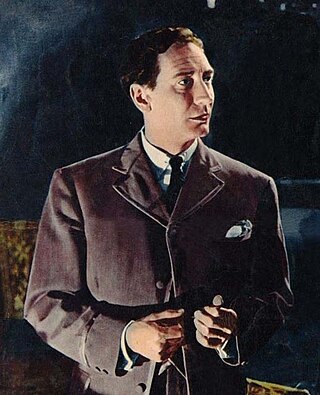
Jonathan Harker is a fictional character and one of the main protagonists of Bram Stoker's 1897 Gothic horror novel Dracula. An English solicitor, his journey to Transylvania and encounter with the vampire Count Dracula and his Brides at Castle Dracula constitutes the dramatic opening scenes in the novel and most of the film adaptations.
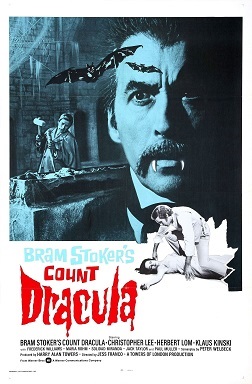
Count Dracula is a 1970 horror film directed and co-written by Jesús Franco, based on the novel Dracula by Bram Stoker. It stars Christopher Lee as Dracula, Herbert Lom as Van Helsing, and Klaus Kinski as Renfield, along with Fred Williams, Maria Rohm, Soledad Miranda, Paul Muller, and Jack Taylor.
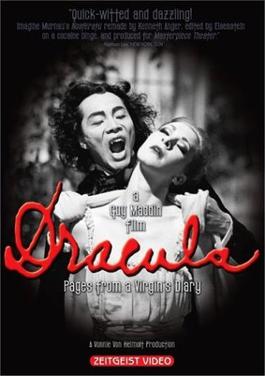
Dracula: Pages from a Virgin's Diary is a 2002 horror film directed by Guy Maddin, budgeted at $1.7 million and produced for the Canadian Broadcasting Corporation (CBC) as a dance film documenting a performance by the Royal Winnipeg Ballet adapting Bram Stoker's novel Dracula. Maddin elected to shoot the dance film in a fashion uncommon for such films, through close-ups and using jump cuts. Maddin also stayed close to the source material of Stoker's novel, emphasizing the xenophobia in the reactions of the main characters to Dracula.

Drakula İstanbul'da is a Turkish 1952 film version of Bram Stoker's original novel Dracula.

Count Dracula is a British television adaptation of the 1897 novel Dracula by Bram Stoker. Produced by the BBC, it first aired on BBC 2 on 22 December 1977. It is among the more faithful of the many adaptations of the original book. Directed by Philip Saville from a screenplay by Gerald Savory, it stars Louis Jourdan as Count Dracula and Frank Finlay as Professor Van Helsing.

Count Dracula is the title character of Bram Stoker's 1897 gothic horror novel Dracula. He is considered the prototypical and archetypal vampire in subsequent works of fiction. Aspects of the character are believed by some to have been inspired by the 15th-century Wallachian prince Vlad the Impaler, who was also known as Vlad Dracula, and by Sir Henry Irving and Jacques Damala, actors with aristocratic backgrounds that Stoker had met during his life.

Dracula, also known as Bram Stoker's Dracula and Dan Curtis' Dracula, is a 1974 British made-for-television gothic horror film and adaptation of Bram Stoker's 1897 novel Dracula. It was written by Richard Matheson and directed by Dark Shadows creator Dan Curtis, with Jack Palance in the title role. It was the second collaboration for Curtis and Palance after the 1968 TV film The Strange Case of Dr. Jekyll and Mr. Hyde.
Dracula is a television adaptation of Bram Stoker's 1897 novel, Dracula, produced by Granada Television for WGBH Boston and BBC Wales in 2006. It was directed by Bill Eagles and written by Stewart Harcourt.
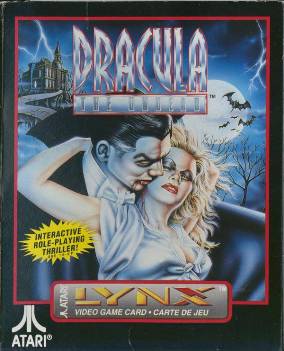
Dracula - The Undead is a video game released in 1991 for the Atari Lynx handheld system. The game is loosely based on Bram Stoker's novel Dracula and features Bram Stoker in the story as the narrator.

The Man is a 1905 Edwardian novel by Bram Stoker, best known for Dracula. A typical Gothic novel, it features horror and romance. The Man has also been published as The Gates of Life.
Teuta was queen of the Ardiaei tribe in Illyria.
Hrabě Drakula is a Czechoslovakian 1971 black and white TV film adaptation of Bram Stoker's original novel Dracula.
Teuta is an Albanian feminine given name, derived from an Illyrian word or title meaning "People".:















